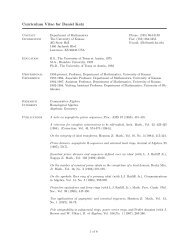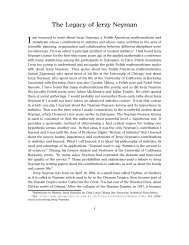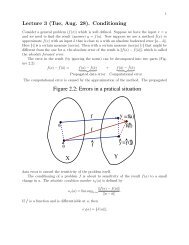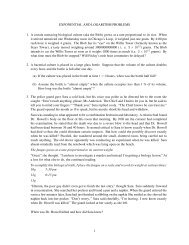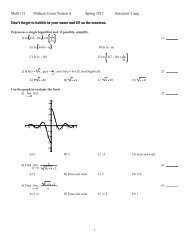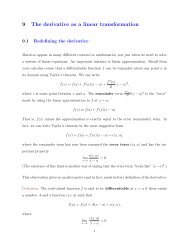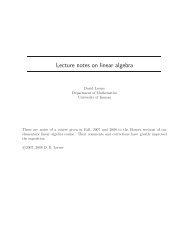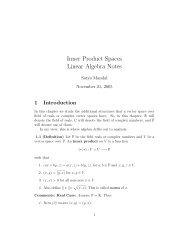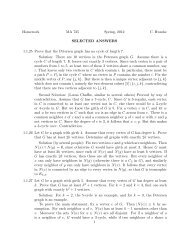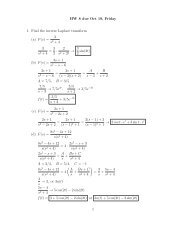Canonical Forms Linear Algebra Notes
Canonical Forms Linear Algebra Notes
Canonical Forms Linear Algebra Notes
Create successful ePaper yourself
Turn your PDF publications into a flip-book with our unique Google optimized e-Paper software.
3 Annihilating Polynomials<br />
Suppose K is a commutative ring and M be a K−module. For<br />
x ∈ M, we define annihiltor of x as<br />
ann(x) = {λ ∈ K : λx = 0}.<br />
Note that ann(x) is an ideal of K. (That means<br />
ann(x) + ann(x) ⊆ ann(x) and K ∗ ann(x) ⊆ ann(x)).<br />
We shall consider annihilator of a linear operator, as follows.<br />
3.1 Minimal (monic) polynomials<br />
3.1 (Facts) Let V be a vector space over a field F with dim(V ) =<br />
n.<br />
Recall, we have seen that M = L(V, V ) is a F[X]−module. For<br />
f(X) ∈ F[X] and T ∈ L(V, V ), scalar multiplication is defined by<br />
f ∗ T = f(T ) ∈ L(V, V )<br />
1. So, for a linear operator T ∈ L(V, V ), the annihilator of T is:<br />
ann(T ) = {f(X) ∈ F[X] : f(T ) = 0}<br />
is an ideal of the polynomial ring F[X].<br />
2. Note that ann(T ) is a non-zero proper ideal. It is non-zero<br />
because dim(L(V, V )) = n 2 and hance<br />
is a linearly dependent set.<br />
1, T, T 2 , . . . , T n2<br />
3. Also recall that any ideal I of F[X] is a principal ideal, which<br />
means that I = F[X]p where p is the non-zero monic in I<br />
polynomial of least degree.<br />
10





